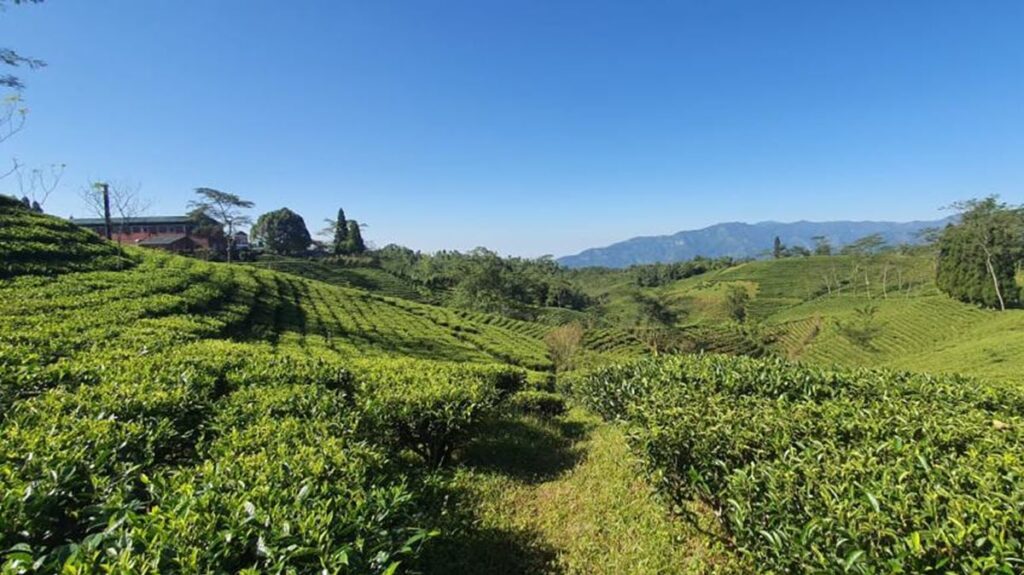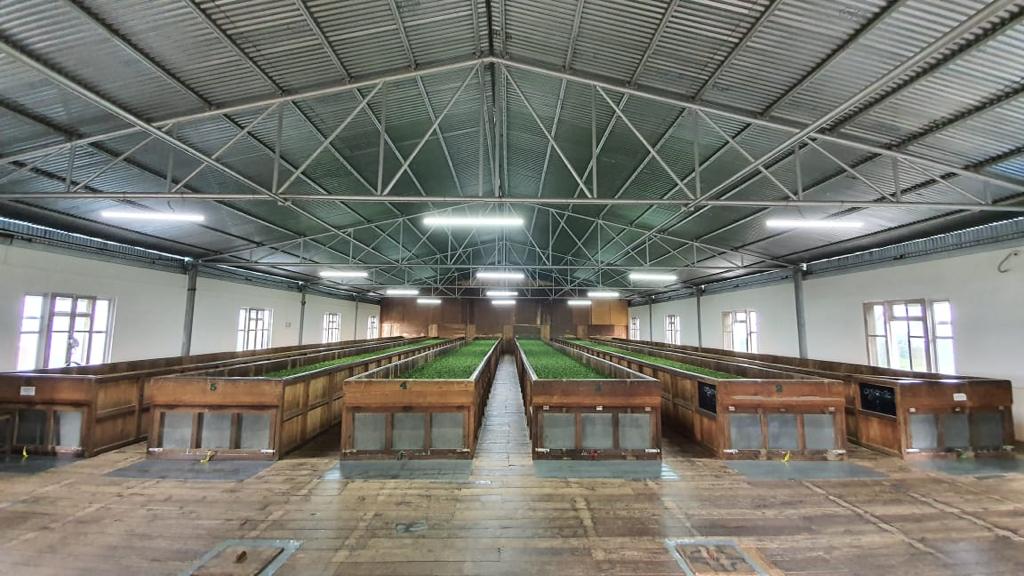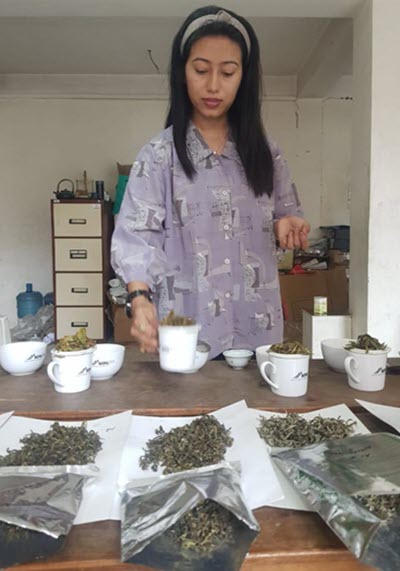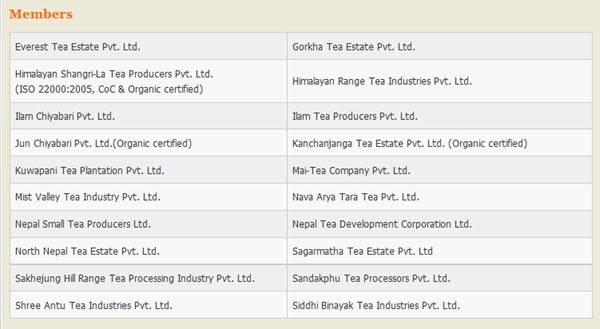Episode 19
Nepal’s tea industry reported record sales in 2020. The fabled tea land is growing greater quantities and greater varieties of loose and broken leaf teas thanks to a government-initiated expansion of the industry to high altitude gardens in non-traditional growing areas. Rural agrarian entrepreneurs are redefining offerings for an international market thirsty for the distinct taste of Himalayan grown oolongs, white teas, and premium black whole leaf. In this segment Aravinda Anantharaman introduces Aasha Bhandari, newly named to promote trade at the Himalayan Tea Producers Cooperative, a consortium of all orthodox tea producers established in 2003.

Himalaya Tea Opportunity
Aasha Bhandari is the International Trade and Promotion Executive at HIMCOOP, in Kathmandu, Nepal. She has taken over from John Taylor who resigned as Marketing Manager. Aasha was with the International Trade Centre working on a sustainable map project when she was invited to take over this role at HIMCOOP. In this segment she talks to us about her plans for HIMCOOP and what she sees as strengths, challenges and opportunities for Nepal’s tea industry.
Aravinda Anantharaman: You’ve recently taken charge of trade and marketing for HIMCOOP. What will you be working on in promoting Nepal’s tea industry?
Aasha Bhandari: We have good quality tea, but we need to focus more on marketing, pricing, and our strategy to promote it in the international market. Nepal has mostly SMEs, farmer-based production and strong factories. We may not be strong in terms of capacity or production but are strong in terms of the quality of tea that we make.
Related: Nepal Orthodox Tea Gets its Own Trademark
Aasha: Tea a growing industry and people are more focused on Orthodox tea rather than CTC. Even in Orthodox, there are varieties of tea – Nepal makes oolong, black tea and white tea. I’m seeing many young tea planters who are involved in the industry or who have started in the tea industry.
They are more focused on putting creativity in tea. One of the factories, a young factory, they are playing with the taste of tea and the processing of tea and that has actually produced a good output. I can see a lot of young people getting involved in focussing on quality.
Aravinda: What do you see as challenges and opportunities?
Aasha: I am excited about adding more SMEs. We have 20 to 26 producers at HIMCOOP, but I want to include more SMEs and go to the farmers on their field and convince them that they have potential marketing outside the country and in exports. For example, we have good teas, but the farmers are unaware about the pricing, about the packaging or invoicing even about the Exim Code (required registration for firms importing or exporting goods from Nepal). I am excited to give that information to them and teach them, or at least help them to think about export in near future. My first priority is to give SMEs the same platform that we are giving to our other producers.
I do feel the pressure that’s on my shoulder to sell the teas. To do better than last year when we had the biggest sale. This year, there is a little difficulty getting the samples to Kathmandu and sending it outside the country. DHL is expensive. Flights are also cancelled. When I started, I felt a little bit worried about not being able to match up the sales of last year or the work we were able to do last year.
I also feel that being very young, I may have to prove myself and that I can deliver.
Aravinda: How has it been so far?
Aasha: I am in touch with our producers and they are doing well. There are difficulties but they are managing. During the first flush, there were hail stones in some places and a few of our producers were sharing that the hail destroyed their tea bushes, especially the buds. But overall, it’s been good so far. I am hopeful about a good second flush. I’m looking forward the white tea actually, because that has good price and good market value. We have specific buyers, small buyers for white tea, and they’ve been inquiring about the white tea. Producers were not able to make white tea in the first flush because of too much rain.
Aravinda: What is the framework of the Nepal tea industry?
Aasha: We are small in geography; we have small gardens and a small production. But if I have to describe the model, how it has been operated, it’s fully based on a small cooperatives, SME models where a few groups of farmers run the factory. The farmers don’t own the factory, the factory is owned by the cooperative of the farmer groups.
At HIMCOOP, member producers have their own factories and some own their own garden also. A few, 10-20% of the factories, depend on the farmers. Since last three, four years, small factories are also being built by farmers themselves.
Aravinda: How does HIMCOOP play a role in the larger Nepal industry?
Aasha: HIMCOOP was officially started in 2003 as a consortium of orthodox tea producers. It was basically established as a joint market marketing platform for the producers. It was established to promote Nepali Orthodox tea in the international market. It works on a cooperative model. We work on samples. Producers send us samples. I taste the tea, characterize its quality and taste, place a price over that and forward to buyer. So that’s how it’s been done. Members send us sample every season, we find buyers and forward the sample to the buyers.
Related: Nepal Announces Tea Traceability Project
HIMCOOP has played a very crucial role to promote the Nepal tea industry because we have a lot of buyers through this platform. Even last year, with the COVID situation, we, as an organization, did not stop. In fact, last year saw the highest sales for HIMCOOP in its entire 18-20 years existence.
Aravinda: What are the factors that have helped create the brand identity of Nepal’s tea?
Aasha: I think it’s the location and the weather, the bushes are planted at an altitude of around 7,500 feet.
Second is the innovation. At HIMCOOP, we have different types of factories. Some focus on quality in volumes while there are a few small factories where they love to play with the tea making. I think, including all other factors, it’s the innovation and the creativity. There are a few factories that have been doing really well. Others are focusing on making good quality tea, not taking risks on the creativity and innovation. But there are different markets for all these teas.
Aravinda: Is HIMCOOP primarily looking at exports or also at the domestic market?
Aasha: On that point, actually last year we were in dilemma with the lockdown and how long it would last. It was end of March, the starting point of first flush when we faced a lockdown. I asked the producers about the local market and plans to market to them. But luckily, the COVID situation was not that problematic last year and we were able to sell all the teas. I bring up this topic quite frequently. Nepal has a limited domestic market. But it’s mainly CTC that is consumed by people. There are people who love trying different types of tea. I think we’ve not marketed… we lack marketing in domestic markets.
I’m not saying we should not export but I think we should also be able to hold the domestic market. I was quite surprised to know that a few of, most of our producers have never thought about the local market. The reason is often cost. They sayit’s not cost effective for them because here people would purchase on less price. I don’t agree because I have been to tourist places like Thamel where they are selling White Tea, SF, Oolong, and silver needle tea at double the price they are exporting. Of course the quantity matters. Domestic market might not be able to consume that much of tea, at the moment, but I think we should offer a percent to domestic market.
Many factories would gift us tea. It was a lot of tea for me alone and I would give it to my friends. They didn’t know that Nepal is producing such good teas. And they’ve been asking me where, which factory. I told them that it’s not for sale and that they have to contact the factory individually if they want to buy it. So there is a gap between the producers and the consumers here in Nepal. From my own personal experience, a lot of people that I’ve given tea as a gift, they want to buy that tea again. There are a few tea shops but either they quote a high price, or it’s tea from Darjeeling, Assam, Sri Lanka. I think we need to focus on the domestic market also.
Aravinda: Would you say, Nepal tea as a brand has been established?
Aasha: I would say it’s in the process. We have a long way to go. I think for now, for the factories that we are selling, for the buyers that come to us, it has already been established, not for the whole market. Buyers do recognize Nepal as being very good. They do expect that if it’s from Nepal, it will be good. I want to take HIMCOOP, establish it as a marketing brand in the future.

HIMCOOP (Himalayan Tea Producers Cooperative)
HIMCOOP is a joint marketing consortium of all Orthodox tea producers of Nepal. It was established in 2003 out of the need to link producers of high quality teas to buyers in the international arena. The intent is to jointly market tea by all producers on a common platform, through a one window sale outlet.
HIMCOOP forwards samples right through out the season to buyers all over the world and also provides any information required on Nepal tea and the Nepal tea industry. HIMCOOP represents estates that offer a variety of white, green, oolong, hand rolled and black whole and broken leaf tea.
HIMCOOP has respect for nature, people, social responsibility, and a commitment to maintain high standards in encompassing all aspects of cultivation and production of quality tea from Nepal.
Signup and receive Tea Biz weekly in your inbox.
Never Miss an Episode
Powered by RedCircle
- Share this post with your colleagues. | Episode 19 | Nepal has good quality tea, but we need to focus more on marketing, pricing, and our strategy to promote “Nepal Tea Quality from the Himalaya” in the international market.




